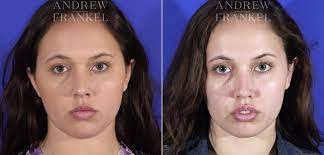Whether you want buccal fat removal naturally or you want to do something to make it go away, you need to know about the different options. There are several ways to remove it, including surgical procedures. Hopefully, this article will give you the information you need to decide which one is best for you.
Table of Contents
Procedures for buccal fat removal
Buccal fat removal best plastic surgeon in India, also known as buccal lumpectomy, is a cosmetic procedure designed to improve the shape of your face. It reduces the size of rounded cheeks and can help you look more refined and attractive.
The process is fairly straightforward. A plastic surgeon removes the buccal fat pad. Incisions are made inside the mouth and anesthesia is administered.
After the procedure, patients are discharged on the same day. However, they may experience soreness, bruising, and swelling for a few days. Patients can control the pain with over-the-counter medications. They can apply cold compresses to manage the swelling.
Before you decide on a treatment, ask your doctor about the risks and benefits. He or she can provide you with recommendations tailored to meet your specific goals.
As with any surgical procedure including buccal fat removal in India, there are certain risks associated with buccal fat removal. While most are minor, there are some serious complications that can occur. Fortunately, most of these are easily treated.
You should also be aware of the fact that buccal fat removal cannot be repeated. This is why it is important to consult a skilled plastic surgeon for a thorough examination.
Another risk is that the procedure may lead to a hollow or gaunt face. Although this is not always the case, it is possible.
Alternatives to buccal fat removal
Buccal fat removal is a cosmetic surgery procedure that can give you a slimmer facial appearance. It is commonly performed through small incisions inside the mouth. A local anesthetic numbs the skin on the face, and a medicated mouthwash is used to prevent infection.
The ideal candidate for buccal fat removal is a patient who has excess fat in the lower third of his or her face. This may be a result of genetics, or due to weight gain. However, it is not an option for people with thin faces.
Candidates should also be physically fit and at a stable weight. Those with full cheekbones should also avoid this type of treatment.
Before you make a decision, it is important to discuss your options with a qualified plastic surgeon. In addition, your doctor will assess your bone structure to determine whether you are a good candidate for the procedure.
You will likely experience swelling after the procedure. Ice and other forms of ice therapy can help reduce the swelling. Afterwards, you can return home and resume normal activities. Depending on your specific condition, you may be given a soft diet to help you heal more quickly.
Some of the risks associated with buccal fat removal include bruising, infection, swelling and bleeding. You should contact your healthcare provider at the first sign of an infection or if you feel pain in the area.
Recovery from buccal fat removal
Buccal fat removal with a cosmetic surgeon removes the excess fat between the cheekbones and jawbones. It is a relatively straightforward procedure that can be performed in a healthcare provider’s office or under general anesthesia.
Patients will typically go home on the same day of the surgery. They will be instructed on how to use cold packs and ice to reduce swelling and bruising. A special mouthwash will also be given to help prevent infection.
The recovery from buccal fat removal surgery is usually short and involves minimal pain. Although you may be dazed for a few days after the procedure, you will be able to get on with your life.
You will need to avoid strenuous activity for the first few weeks after the surgery. Light exercise is ideal. This helps keep blood circulation flowing and will decrease the risk of blood clots.
Swelling will be minimal after the procedure and should subside within a week. However, you may be left with residual swelling that will take several months to disappear.
Conclusion
Typically, the most important thing you can do after a surgery is follow the doctor’s instructions and make sure you have someone to care for you at night. As long as you follow the instructions, you should be able to return to normal activities within a couple of weeks.

